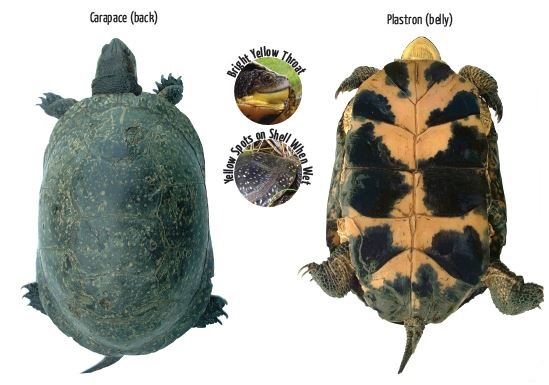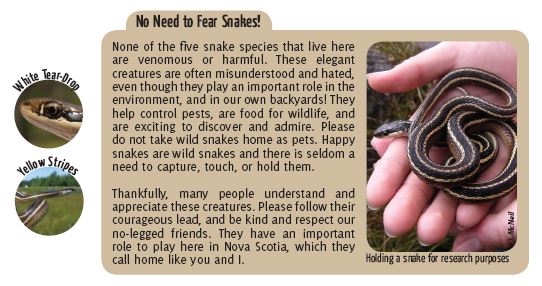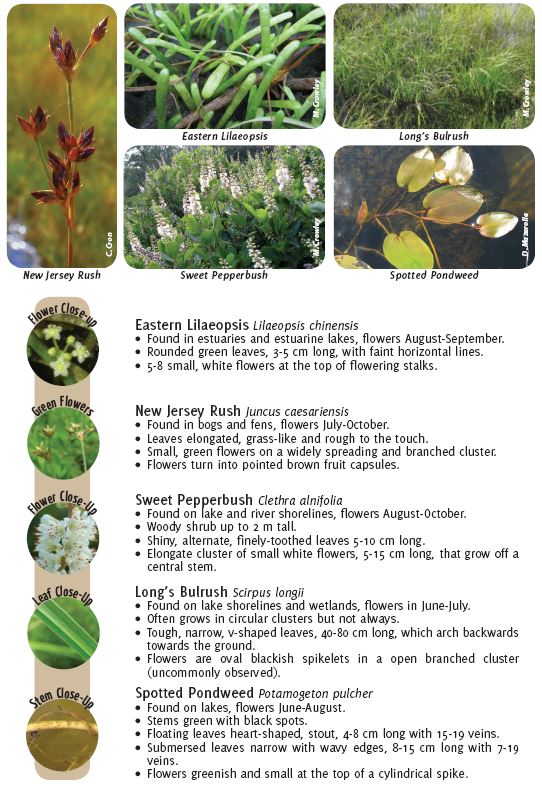Blanding’s Turtle (Emydoidea blandingii) ENDANGERED
Description
- Adults are medium-sized turtles (15-25 cm long) with long necks and bright yellow throats.
- The upper shell (carapace) is smooth and high-domed. When wet it is black with yellowish spots and when dry it is dark grey.
- The lower shell (plastron) is yellow with large black blotches.
- Hatchlings are toonie-sized, have pale yellow throats, long thin tails, and solid grey/black upper shells. Their lower shell is yellow with a central black blotch.
Threats
- Road mortality affects adults and hatchlings.
- Habitat loss and fragmentation from land modification and development.
- Predators such as raccoons, small mammals, and birds eat eggs, hatchlings, and juveniles.

Eastern Ribbonsnake (Thamnophis sauritus) THREATENED
Description
- Slender black semi-aquatic snake with three distinct yellow stripes along its entire length.
- Caramel brown sides and a pale white or yellow belly.
- Generally between 50 and 70 cm long. Newborn Ribbonsnakes are about 20 cm long and look the same as adults.
- White tear-drop scale in front of each eye.
Threats
- Road mortality on highways and trails.
- Declining amphibian populations.
- Invasive fish species (Chain Pickerel and Smallmouth Bass).
- Habitat loss and alteration (shoreline development, wetland alteration, road construction).
- Predation by domestic animals such as dogs and cats.
Atlantic Coastal Plain Flora
Nova Scotia is home to over 90 species of Atlantic Coastal Plain Flora. This guide focuses on the 13 species listed under the Species at Risk Act and the Nova Scotia Endangered Species Act; however, many other species of Atlantic Coastal Plain Flora are found in the same habitats and will benefit from habitat stewardship.

Range
Concentrated in southwest Nova Scotia.
Threats
- Shoreline and shrub-zone alterations (removal of trees and shrubs, infilling, rock walls, mowing/raking, docks/launches, lawns, decks, patios, OHVs) can destroy or degrade suitable habitat.
- Nutrient run-off (agriculture operations, septic tanks, land clearing, lawns, roads) can increase lake nutrient levels which encourages the growth of common weedy plants and algal blooms.
Identification Tip:
Some species may be easiest to identify when they are in flower. Refer below for flowering times and try to walk your property during these times to look for these species. This way you know where they are growing when they are more difficult to spot.
ENDANGERED:
THREATENED:
SPECIAL CONCERN:







